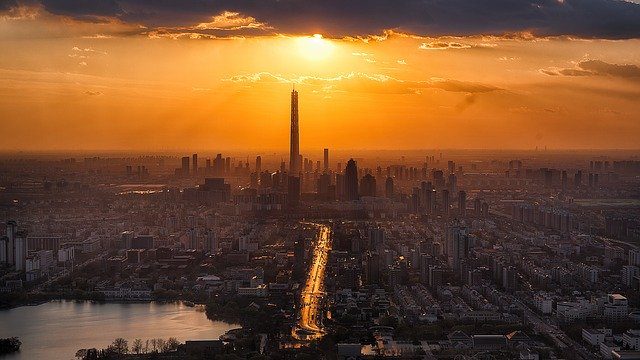LONDON — With urban populations surging around the world, cities will struggle to keep residents safe from fast-growing heat risks turbo-charged by climate change, scientists and public health experts warned this week.
Heat is already the leading cause of deaths from extreme weather in countries including the United States. The problem is particularly severe in cities, where temperature extremes are rising much faster than the global average, they said.
Even today, areas where the world’s population is concentrated, such as in Asia’s cities, are seeing warming of four times the global average temperature increase, a Lancet report on health threats from climate change noted this week.
“It’s a worldwide problem – in cities in North America, Europe, Asia, Africa,” said Joy Shumake-Guillemot, who leads a joint climate and health office in Switzerland for the World Health Organization and World Meteorological Organization.
In coming decades, urban warming “is going to put populations in a position where they’re exposed to temperatures they’re not acclimated to, cities are not built for and social systems are really not prepared to deal with,” she told the Thomson Reuters Foundation.
Cities are often “heat islands” hotter than surrounding rural areas – because their vast expanses of concrete trap and hold heat, including that given off by vehicles and energy use in the city itself, and they have fewer cooling green spaces.
But a growing number of cities are now trying to tackle the problem. Tel Aviv, for instance, plans to cover many new public spaces with shade either from trees or artificial canopies, said Shumake-Guillemot, one of the authors of the Lancet report.
Other cities are working to set heat standards for everything from workplaces to schools, establishing public cooling centers and rethinking warning messages and heat advice, to more effectively reach those most at risk, she said.
Employers and unions also are taking action, in some cases by shifting construction work to cooler night-time hours and enforcing water breaks.
But the changes are rarely easy and can have unintended consequences – such as construction workers put on night shifts who then struggle with sleep deprivation and may be at greater risk of falling, Shumake-Guillemot said.
“There are complicated trade-offs to try and figure out how we are going to live successfully and in a healthy way in a much warmer world,” noted the environmental health policy expert.
For now, especially in the hottest places, “people are working in really dangerous conditions… and sometimes they don’t have other options,” she added.
The Lancet report found that in 2018 excessive heat caused the loss of 133 billion hours of work worldwide that would otherwise have been carried out, 45 billion more than in 2000.
In several southern U.S. states, as much as 15-20% of daylight working hours last year were too hot for people to do their jobs, it found.
But construction workers, military personnel and farmers, in particular, have little choice but to be outside, noted Shumake-Guillemot.
Preventable deaths
Kristie Ebi, a professor at the University of Washington Center for Health and the Global Environment, said dealing with rising heat threats was in some ways simpler than tackling other climate-related health risks, such as the spread of diseases like dengue fever or malaria.
“People should not and do not need to be dying in heatwaves,” said Ebi, one of the Lancet report’s authors. “Every heat-related death is preventable, essentially.”
But huge amounts of work are required to understand why those most at risk from extreme heat are not getting the help they need, she said.
People over 65, for instance, are among those most likely to die during heatwaves, because of pre-existing health conditions, failing to recognize dehydration or taking prescription drugs that can interfere with their ability to sweat, Ebi said.
Many cities have set up cooling centers to help older people ride out heatwaves, but have not provided transport for them to get there, she added.
Other people who face significant heat risks include children playing afternoon sports and professional athletes training in high temperatures, she said.
Organizers of the 2020 Tokyo Olympics are currently working to cut heatstroke risks for athletes running on what promises to be a blistering marathon course next summer, even after it is painted with heat-reflective material.
“Overall, the awareness (of heat risk) is not where it needs to be – but we’re very slowly making progress,” Ebi said.—Reporting by Laurie Goering @lauriegoering; editing by Megan Rowling, the Thomson Reuters Foundation










